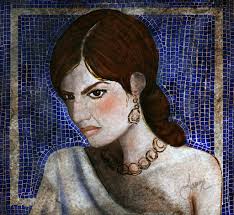Images courtesy of: truefresco.net, paintermagazine.co.uk
Painting by: Diego Rivera
In my project, I explored different versions of La Llorona stories across cultures. I wanted to explore why these stories are so pervasive and enduring, what purpose they serve and to find alternative perspectives about what La Llorona represents. Like fairy tales, La Llorona stories serve a few purposes: they are morality tales, they represent cultural fears and they reflect the climate of the time period that they represent. For the most part La Llorona tales are warnings about what happens when men, women and children do not act according to strict rules of behavior: children are not to wander off, men are not to abandon their wives and women need to adhere to their role dictated by a patriarchal society (a nurturing, pure, mother). These stories also warn against acting out of jealousy. Another source of anxiety that these stories underpin is that of colonization: La Malinche is considered a betrayer of her people, but it also addresses the fear and anger of conquered indigenous people. Rachel is somewhat similar in that she also weeps for the children of Israel, though not reviled as La Malinche is.
Taking these disparate stories of weeping and/or vengeful women showed me that these tales all contain similar gothic elements of love, loss, horror, and violence. These stories have endured and can be found across different cultures because the gothic appeals to human nature; we are both repulsed and attracted by horror and the abject.
La Llorona Stories Across Culture Part 1 of 3
La Llorona Stories Across Culture-An Alternative Perspective Part 2 of 3
Final Analysis: La Llorona as Feminist or Abject Figure? Part 3 of 3


